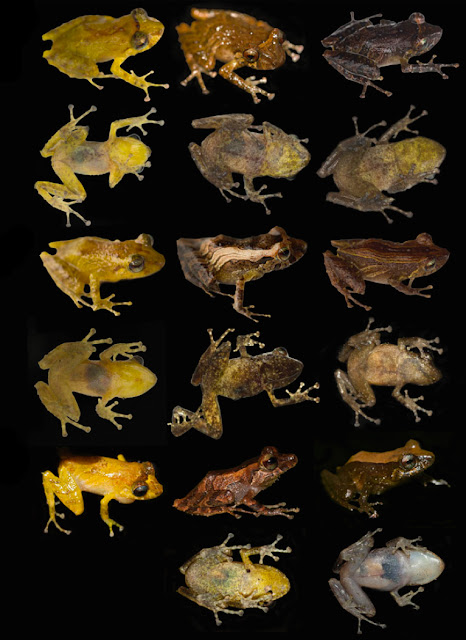
Ortega-Andrade, H. M., Rojas-Soto, O., Valencia, J. H., Espinosa de los Monteros, A., Morrone, J. J., Ron, S. R. y Cannatella, D. C. 2015. Insights from integrative systematics reveal cryptic diversity in Pristimantis frogs (Anura: Craugastoridae) from the Upper Amazon Basin. PLoS ONE 10:e0143392.
Ver publicación en PLOS ONE Pdf
Abstract
Pluralistic approaches to taxonomy facilitate a more complete appraisal of biodiversity, especially the diversification of cryptic species. Although species delimitation has traditionally been based primarily on morphological differences, the integration of new methods allows diverse lines of evidence to solve the problem. Robber frogs (Pristimantis) are exemplary, as many of the species show high morphological variation within populations, but few traits that are diagnostic of species. We used a combination of DNA sequences from three mitochondrial genes, morphometric data, and comparisons of ecological niche models (ENMs) to infer a phylogenetic hypothesis for the Pristimantis acuminatus complex. Molecular phylogenetic analyses revealed a close relationship between three new species—Pristimantis enigmaticussp. nov., P. limoncochensis sp. nov. and P. omeviridis sp. nov.—originally confused withPristimantis acuminatus. In combination with morphometric data and geographic distributions, several morphological characters such as degree of tympanum exposure, skin texture, ulnar/tarsal tubercles and sexual secondary characters (vocal slits and nuptial pads in males) were found to be useful for diagnosing species in the complex. Multivariate discriminant analyses provided a successful classification rate for 83–100% of specimens. Discriminant analysis of localities in environmental niche space showed a successful classification rate of 75–98%. Identity tests of ENMs rejected hypotheses of niche equivalency, although not strongly because the high values on niche overlap. Pristimantis acuminatus and P.enigmaticus sp. nov. are distributed along the lowlands of central–southern Ecuador and northern Peru, in contrast with P. limoncochensis sp. nov. and P. omeviridis sp. nov., which are found in northern Ecuador and southern Colombia, up to 1200 m in the upper Amazon Basin. The methods used herein provide an integrated framework for inventorying the greatly underestimated biodiversity in Amazonia.



